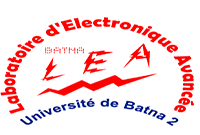I
n this paper, we propose a new method for Bulk waves detection of an acoustic microwave signal during the propagation of acoustic microwaves in a piezoelectric substrate (Lithium Niobate LiNbO3). We have used the classification by probabilistic neural network (PNN) as a means of numerical analysis in which we classify all the values of the real part and the imaginary part of the coefficient attenuation with the acoustic velocity in order to build a model from which we note the Bulk waves easily. These singularities inform us of presence of Bulk waves in piezoelectric materials.
By which we obtain accurate values for each of the coefficient attenuation and acoustic velocity for Bulk waves. This study will be very interesting in modeling and realization of acoustic microwaves devices (ultrasound) based on the propagation of acoustic microwaves.
Our work is mainly about detecting BAW (Bulk acoustic waves), where we compared between Lithium Niobate (LiNbO3) and Lithium Tantalate (LiTaO3) ,during the propagation of acoustic microwaves in a piezoelectric substrate. In this paper, We have used the classification by Probabilistic Neural Network (PNN) as a means of numerical analysis in which we classify all the values of the real part and the imaginary part of the coefficient
attenuation with the acoustic velocity for conclude whichever is the best in utilization for generating Bulk acoustic waves.This study will be very interesting in modeling and realization of acoustic microwaves devices (ultrasound) based on the propagation of acoustic microwaves.
Zn(1–x)MgxO thin films with various concentrations of magnesium were deposited using the spray pyrolysis method. The transmittance spectra recorded for all films exhibit maxima exceeding 90%. The band gap energy of the films with wurtzite structure increases from 3.22 up to 3.60 eV by incorporating Mg into ZnO. However, when the atomic ratio of Mg exceeded 0.4, a second crystalline phase (assigned to cubic MgO) became discernable in XRD patterns, a compressive strain was observed in the wurtzite lattice, and crystallite sizes decreased significantly. In accordance with these observations, finer grains with a pronounced columnar growth were observed in 3D AFM representations and the surface roughness decreases significantly. Finally, selective etching in water yields to porous films with a great surface-to-volume ratio, a lower refractive index and a better light transmission. These porous films with tunable band gap seem to be excellent candidates to various interesting applications.
